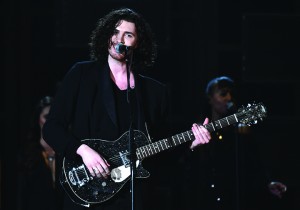
By Allie Matherne
Reporter
Andrew Hozier’s song “Take me to Church,” fuses controversy and rhythm as he takes on topics including religion and gay rights. The song quickly ascended the music charts and left a mark on listeners. It was nominated this weekend for Song of the Year at the Grammy’s.
The title of the song is enough to make any Christian take a second glance. Hozier is trying to draw attention to fallacies he sees in the institution of the church.
“It’s not just sacrilegious, it’s attacking church doctrine,” said Nashville junior Emily Decker.
The lyrics to the song live up to the title. With lyrics such as “I’ll worship like a dog at the shrine of your lies,” Hozier doesn’t shy away from controversy.
“If it had been subtle, people would’ve overlooked it…and attention needs to be brought to this subject,” said New Braunfels junior Natalee Burris, in reference to the issues surrounding human rights within the church.
“[The song is about] an organization like the church [that], say, through its doctrine, would undermine humanity by successfully teaching shame about sexual orientation — that it is sinful, or that it offends God,” said Hozier in an interview with New York Magazine.
The Irish singer is no stranger to the church. He blames the church for a lot of damage in Ireland, calling it “irreparable” in an interview with the London Evening Standard.
“When people are so openly hateful about the church, I want to lend an extra ear—especially in music,” said Maryland third year seminary student Michael Visy. “If we react how he wants us to react, then he’s right.”
The song culminated in an equally controversial music video. The music video has over 100 million views and has sparked conversation ranging from human rights in Russia to the way Christians react to homosexuality.
“I didn’t want the video to be about the church specifically, but there was an example somewhere else in the world of another organization that was undermining some part of humanity,” said Hozier in an interview with Gigwise, an online British news site.
The video centers around two gay men and their relationship in modern day Russia. It highlights the dark implications of hate.
“It references the very organized attacks against LGBT youths that are carried out with impunity, without action from law enforcement,” said Hozier.
Russia has “effectively legalized discrimination against LGBT people and cast them as second class citizens,” according to Human Rights Watch, in their report on Russia titled License to Harm.
“They created a relationship between [two men] that as really human and real for people who haven’t necessarily been exposed to that,” said Los Angeles junior Devin Perry. “In order for things to change, for people who are unmoved in their beliefs, [we] have to have a conversation through various forms of art. It makes things personal and human.”
Art and culture is the only platform to discuss these issues and prompt conversations, said Perry.
“If you feel offended or disgusted by the image of two people kissing, if that’s what it is, but you’re more disgusted by that than the actual violence … I think you should take a look at your values, maybe,” said Hozier in an interview with Fuse TV.






